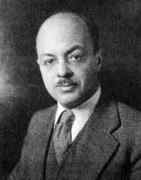Person: Van Kampen, Egbert Rudolf

Egbert van Kampen was a Belgian mathematician who made important contributions to topology and algebra.
Mathematical Profile (Excerpt):
- After the war ended they moved again, this time to The Hague where Egbert attended Eerste Christelijke school.
- Following his graduation from school, van Kampen entered the University of Leiden.
- In 1927 he travelled to Göttingen where he met van der Waerden who was undertaking research there for his habilitation.
- Discussions with these two mathematicians proved important for van Kampen's research and he began to study ways of making a satisfactory topological definition of a variety.
- Back at the University of Leiden, his research was supervised by Willem van der Woude, himself a student of Pieter Schoute.
- Van Kampen submitted his thesis Die kombinatorische Topologie und die Dualitätssatze Ⓣ(Combinatorial topology and the duality theorem) to the University of Leiden and was awarded his doctorate in 1929.
- Before the award of his doctorate, van Kampen had spent the summer months of 1928 at the University of Hamburg where he worked with Artin.
- Van Kampen's first published work was an example of a knot which appeared in the Hamburger Abhandlungen in 1928.
- At this stage in his career van Kampen was approached by Johns Hopkins University in the United States and offered a position but he was still too young to enter the United States so decided to work in Europe before taking up the offer from Johns Hopkins.
- Schouten worked all his life on tensor analysis and although this seems quite far removed from the topics that van Kampen had been undertaking research on, nevertheless he collaborated with Schouten on three papers on tensor analysis, published in 1930, 1931 and 1933.
- In 1931 van Kampen left Europe and travelled to the United States to take up the position which he had been offered at Johns Hopkins University in Baltimore, Maryland.
- Van Kampen solved the problem, showing that Zariski's relations were sufficient, and the result is now known as the Zariski-van Kampen theorem.
- Van Kampen spent the year 1933 at Princeton University where J W Alexander, A Einstein, M Morse, O Veblen, von Neumann, and H Weyl were working at the newly founded Institute for Advanced Study.
- Van Kampen became interested in Pontryagin's duality and wrote sixteen papers on this topic, including an excellent survey article published in 1935.
- In 1935 van Kampen began to work in a different area of mathematics when he became interested in the work which Wintner was undertaking.
- Wintner had worked at Johns Hopkins since 1930, the year before van Kampen arrived, and his interests were in almost-periodic functions and differential equations.
- Van Kampen had become involved with the study of almost-periodic functions when he had visited Princeton, and von Neumann had explained to him how Pontryagin's duality results could be extended using almost-periodic functions.
- Van Kampen published a paper on almost-periodic functions in the Journal of the London Mathematical Society in 1937, having published his first joint paper with Wintner On the canonical transformations of Hamiltonian systems in the American Journal of Mathematics in the previous year.
- In April 1941 van Kampen entered hospital and doctors operated to remove the malignant growth.
- At first the operation was thought to have been successful and van Kampen resumed teaching in the autumn of 1941.
- With his health rapidly deteriorating, van Kampen entered hospital again in December 1941 and another operation was carried out in January 1942.
- It was not successful and van Kampen lapsed into unconsciousness on 10 February and died on the following day.
- During his final illness van Kampen's papers were still appearing in print.
- Wintner was a joint author of four of these papers, Kac of three, and two had van Kampen as sole author.
- Five years after van Kampen's death Wintner published a paper On the asymptotic distribution of geodesics on surfaces of revolution which he made a joint work with van Kampen since it contained ideas on which the two had been working.
Born 28 May 1908, Berchem, Antwerp, Belgium. Died 11 February 1942, Baltimore, Maryland, USA.
View full biography at MacTutor
Tags relevant for this person:
Origin Belgium
Thank you to the contributors under CC BY-SA 4.0! 

- Github:
-

- non-Github:
- @J-J-O'Connor
- @E-F-Robertson
References
Adapted from other CC BY-SA 4.0 Sources:
- O’Connor, John J; Robertson, Edmund F: MacTutor History of Mathematics Archive
